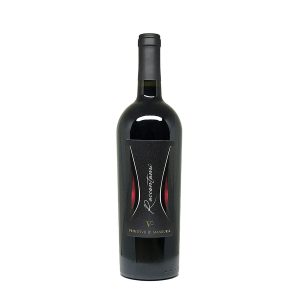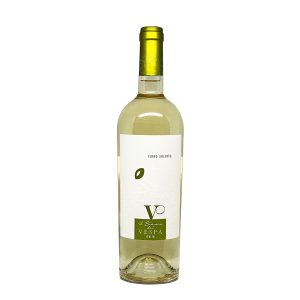Apulia’s coastline is longer than that of any other mainland Italian region. In the north, the Gargano promontory extends out into the Adriatic like a ‘sperone’ (“spur”), while in the south, the Salento peninsula forms the ‘tacco’ (“heel”) of Italy’s boot. The highest peak in the region is Mount Cornacchia (1,152 meters above sea level) within the Daunian Mountains, in the north along the Apennines.
It is home to two national parks, the Alta Murgia National Park and Gargano National Park.
Outside of national parks in the North and West, most of Apulia and particularly Salento is geographically flat with only moderate hills.
The climate is typically mediterranean with hot, dry and sunny summers and mild, rainy winters. Snowfall, especially on the coast is rare but has occurred as recently as January 2019 (following on from snow in March 2018 and January 2017). Apulia is among the hottest and driest regions of Italy in summer with temperatures sometimes reaching up to and above 40 °C in Lecce and Foggia.
The coastal areas, particularly on the Adriatic and in the southern Salento region are frequently exposed to winds of varying strengths and directions, strongly affecting local temperatures and conditions, sometimes within the same day. The Northerly Bora wind from the Adriatic can lower temperatures, humidity and moderate summer heat while the Southerly Sirocco wind from North Africa can raise temperatures, humidity and occasionally drop red dust from the Sahara. On some days in spring and autumn, it can be warm enough to swim in Gallipoli and Porto Cesareo on the Ionian coast while at the same time, cool winds warrant jackets and sweaters in Monopoli and Otranto on the Adriatic coast.
About Puglia wine
Puglia is the local name for the region known as Apulia in English which is hugely important in terms of quantity, if not always quality, to the world of wine – and is to be found on an increasing number of wine labels. This region which includes all of the heel of Italy and as far again up the back of the heel along the Adriatic coast produces more wine than Australia, even if only a small proportion of it so far is sold in bottle rather than tanker. Things are changing fast here however.
Until the 1990s, Puglia was a guilty secret, its potent reds and heavy whites shipped quietly north to beef up the less ripe produce of more famous vineyards in Italy, to add colour and weight to thin ferments from southern France, and to provide the raw material for manufacturers (there is no other word) of alcoholic drinks such as fizz and vermouth all over northern Europe. If wine producers knew anything about Puglia, they tended to keep quiet about it.
The advent of New World wines however gave a new respectability to wines produced in hot climates, and a new breed of flying winemaker was set to work on the vineyards and vast cellars of Puglia to fashion something reliable and inexpensive for the supermarket buyers of northern Europe. Chardonnay and other international varieties were duly planted and – hey presto – another source of anodyne but predictable bargains emerged. Many of these wines are described on the label as IGT Puglia, or IGT Salento after the peninsula that constitutes the heel of Italy.
There are several DOCs and DOCGs in Puglia but few of them have forged any sort of international reputation. In fact only 3 or 4% of all Apulian wine is sold as a DOC – most likely Salice Salentino, Copertino, Squinzano or Primitivo di Manduria, all of them strong, sometimes almost porty, reds.
For the moment, Puglia’s strong suit is alcohol and flavour and a range of powerful local red grape varieties. Negroamaro, meaning ‘black and bitter’, is one of the most planted grapes in the region, popular with growers for its sturdy performance in the vineyard, and with wine producers for its depth of colour, flavour and alcohol. It is often blended with the softer, more velvety Malvasia Nera which some think has an even more exciting future in its two strains named after the towns of Lecce and Brindisi. Nero di Troia, another grape whose name suggests Greek origins, is grown in the north of the region. Montepulciano can be found in the very north towards the boundary with Molise.
But the grape of most interest to non-Italians is the early-ripening Primitivo, a speciality of the Gioia del Colle plain just south of Bari and Manduria, the western coast of the heel just south of Taranto. DNA analysis has proved what many had suspected all along, that this vine variety is one and the same as California’s Zinfandel, and Croatia’s Crljenak Kaštelanski. Some producers have even labelled wines for export Zinfandel. You can find all sorts of wines coming from this, Italy’s New World wine region, where winemakers are writing their own rules, and none of them is fiendishly expensive – yet. There are inexpensive branded varietals which could have been made anywhere; intensely alcoholic ferments that offer perhaps the biggest kick per buck in the world; suspiciously pale, light versions thereof (suggesting grossly high yields or deliberate dilution); and there are some finely crafted, supple, rich reds that really are expressions of the best this very varied region can offer the modern wine drinker.
Some favourite producers: Albea, A Mano, Michele Calò e Figli, Candido, Cantele, Due Palme, Felline, Masseria li Veli, Masseria Monaci, Castello Monaci, Rivera, Cantina San Donaci, Taurino,
Source: Wikipedia


